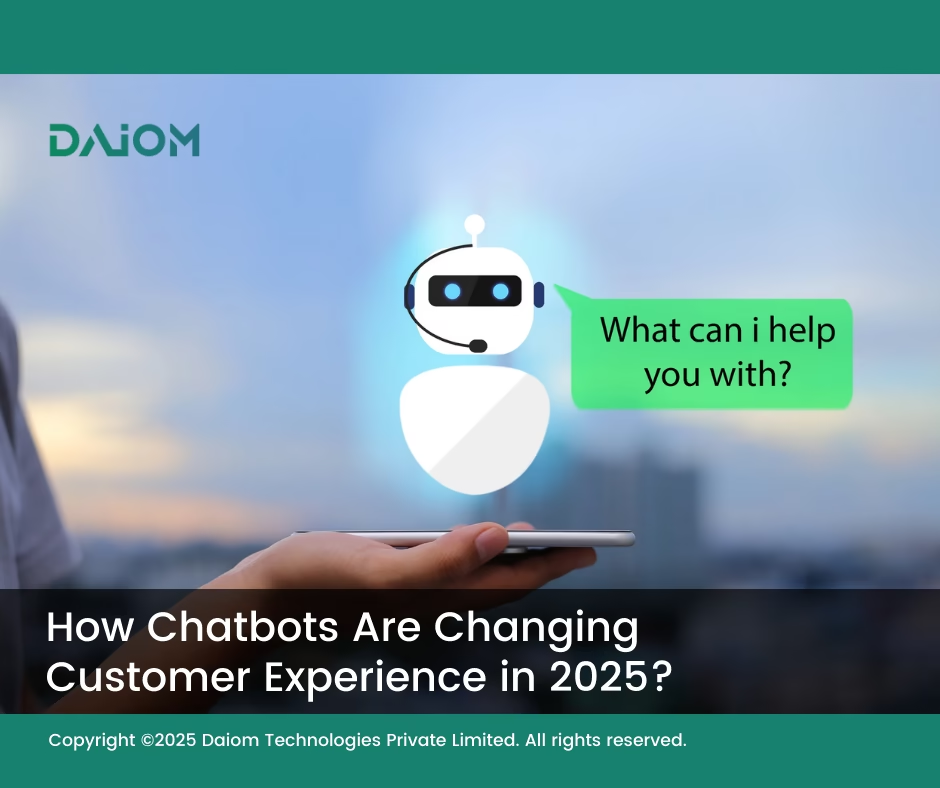Today, most brands use chatbots for two main purposes: sales and customer service.
In fact, around 70% of chatbot interactions are for handling inquiries.
One major shift we’ve seen is that people now prefer chatting over calling—it’s quicker, more convenient, and more natural for many.
For brands, this change brings a major advantage: chat support costs nearly one-fifth of what it takes to handle a phone call.
With automation and AI-powered bots, businesses can now respond to more customers, resolve issues faster, and reduce support costs—all at the same time.
This blog explores how this is changing the face of customer experience in 2025 and what brands can do to stay ahead.
“Chatbots are transforming how retailers engage with customers—offering real-time support, reducing costs, and driving higher conversions.”
— Brian Manusama, Director Analyst, Gartner
Table of Contents
1. The Evolution of Chatbots
Chatbots didn’t just evolve on their own — they evolved alongside the way we use the internet. As the internet changed, so did the way we interact with it — and that shaped what we expect from technology.
From the early days of simple text to today’s mobile-first world, each shift has pushed chatbots to become faster, smarter, and more natural. Here’s how that journey unfolded:
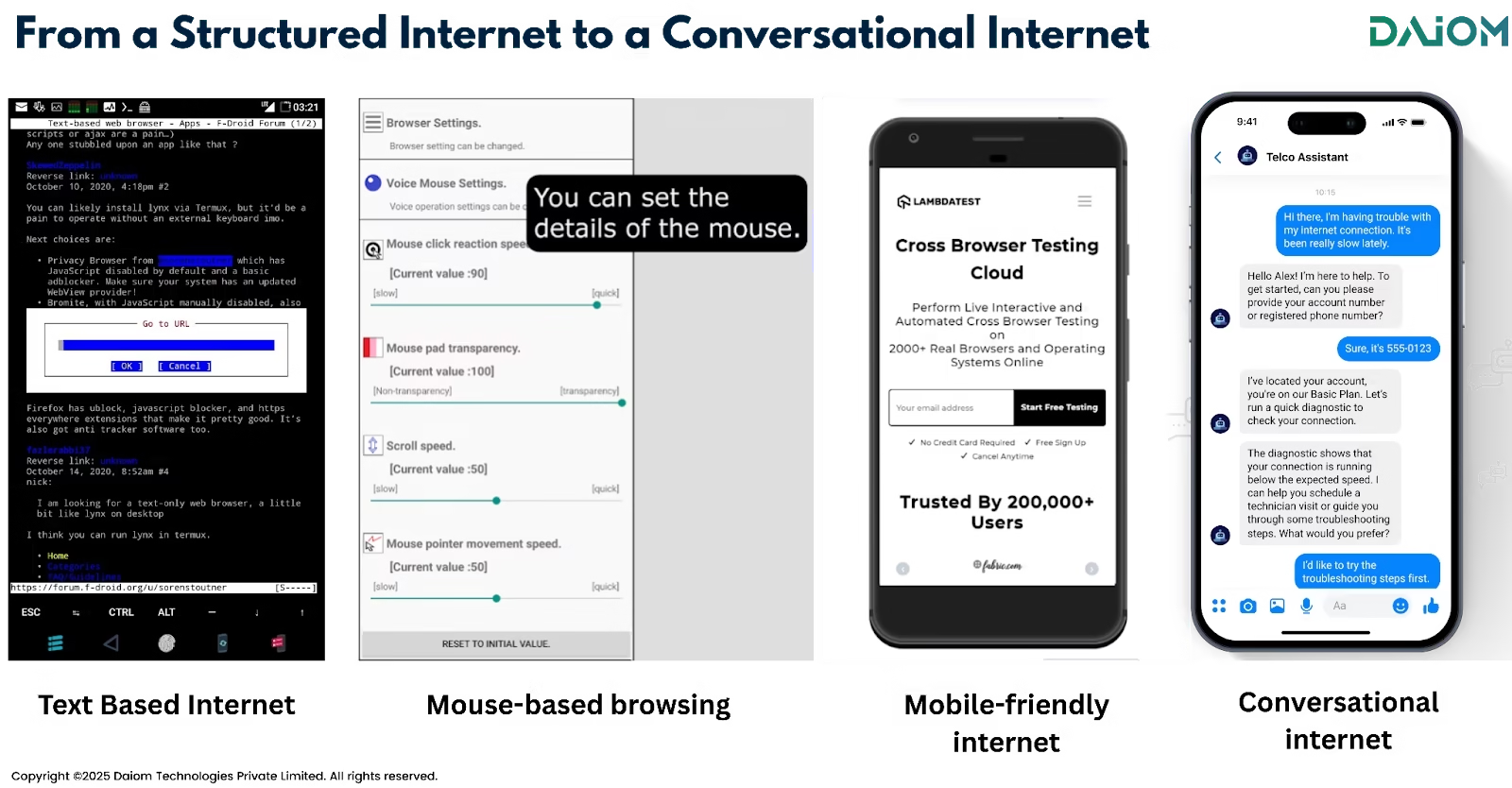
- Text-Based Internet: In the early days, the internet was mainly text. People interacted using typed commands and simple exchanges. This shaped how early digital tools, including chatbots, were designed — to work with text inputs.
- Browser Era: As browsers emerged, the web became more visual and easier to navigate. People moved from typing commands to clicking links and exploring pages, shifting expectations toward more interactive online experiences.
- Keyboard and Mouse Interaction: With desktops becoming common, keyboard and mouse became the main way we navigated the digital world. Interfaces were built for clicking, scrolling, and form-filling — including early chatbot windows on websites.
- Mobile Era: The rise of smartphones changed everything. People started consuming content on smaller screens, often on the go. Attention spans shortened, and there was less patience for typing or hunting through menus.
- Conversational Era: Today, people want speed and simplicity. They’d rather chat or speak than click through options. This has shaped modern chatbots — they’re conversational, fast, and natural, fitting perfectly into today’s mobile-first, short-attention world.
This means that chatbots are not just useful; they are becoming central to how businesses interact with customers. Whether it’s asking Siri for the weather, chatting with a banking bot to check your balance, or using a retail bot to get product suggestions, conversations are becoming the new interface.
2. Revolution of AI based chatbots
Chatbots have been around for quite some time—mainly as structured, rule-based bots that could handle basic queries through pre-set flows. These traditional bots were useful but limited.
However, in the last 2–3 years, the landscape has changed significantly with the rise of AI and tools like ChatGPT.
Now, AI-powered bots are more intelligent, context-aware, and capable of handling complex conversations. As a result, the value of simple, standalone bots has declined, since they can’t match the flexibility and intelligence of AI-driven ones.
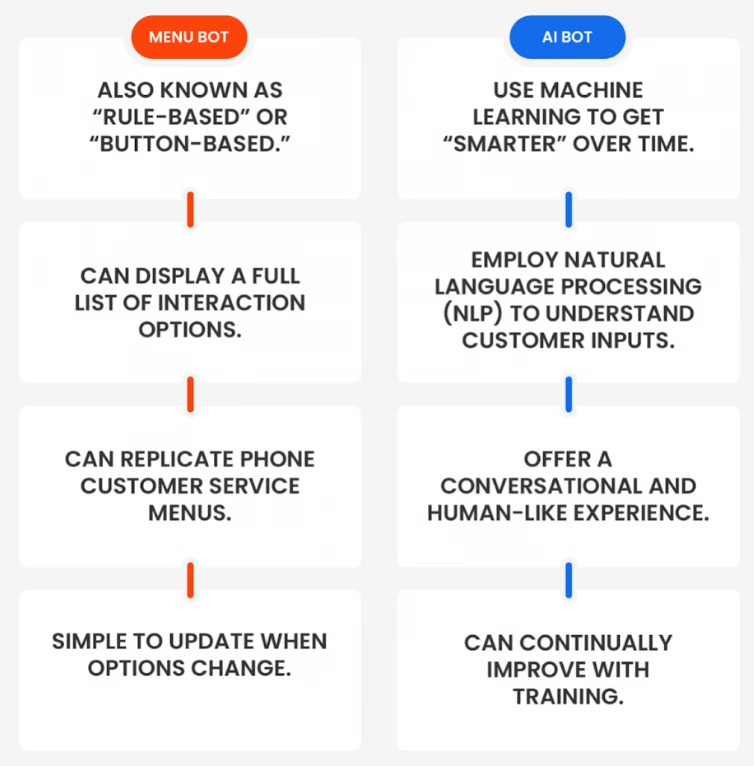
Looking ahead, the future of chatbots lies in agentic bots—bots that don’t just chat but can take real action. These bots will be able to perform tasks across systems, such as booking appointments, updating records, solving support tickets, or even coordinating with human agents when needed.
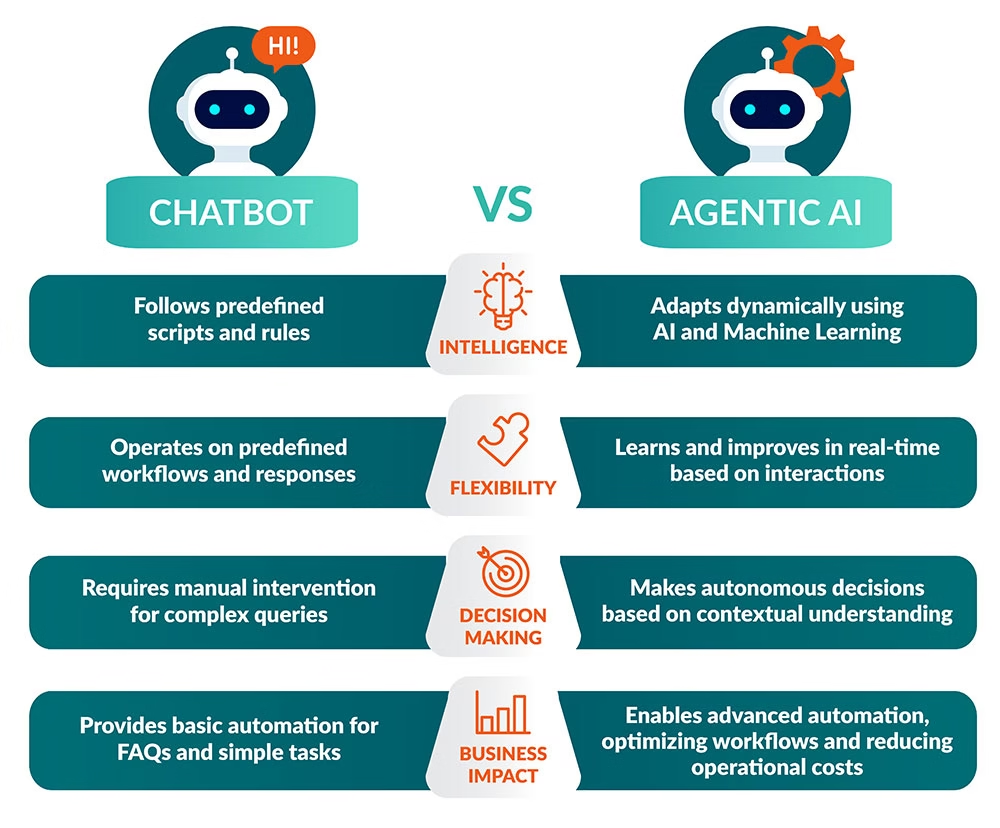
They will move from being passive responders to active problem-solvers, marking the next big leap in customer experience and business automation.
Read more – The Rise of Generative AI and Chatbots: Why They Matter and How Businesses Use Them?
3. Use Cases of Chatbots
Over the last few years, I’ve seen some chatbot use cases work extremely well—while others haven’t delivered as expected.
In my own experience working with brands, simple use cases like product inquiries or information retrieval (like checking order status or return policy) have shown clear value.
They reduce pressure on service teams and offer customers instant answers. These are well-established and widely used.
Proven chatbot use cases:
- Product inquiries: Customers often ask about features, availability, or prices. Chatbots can handle these questions instantly, reducing wait times.
- Information retrieval: For tasks like checking order status, store hours, or return policies, chatbots offer quick and accurate responses.
- Appointment booking: Many service businesses use bots to schedule appointments or collect customer information for follow-up.
- Basic service issues: Issues like resetting a password or tracking a shipment can be resolved easily through automation.
But some use cases still feel experimental.
For example, many retail brands have explored chatbot-based shopping flows using tools like WhatsApp integration or Shopify plugins.
Technically, these setups allow a full product catalog to be connected and even enable checkout within the chat. However, customer adoption has often been low.
The experience tends to feel limited compared to shopping on a website or mobile app, leading to higher drop-off rates. So while the backend functionality exists, the actual user behavior hasn’t fully supported shopping through chat yet.
Unproven chatbot use cases:
- End-to-end shopping experiences: While it’s possible to connect product catalogs via Shopify or other tools, most users don’t yet prefer to browse and purchase entirely within a chat. The experience often lacks visual richness and smooth navigation.
- Complex customer support: Bots struggle with emotional nuance or multi-layered issues that require human understanding and judgment.
As technology improves, these limitations may change, but for now, brands should focus on what bots do best—automating simple, repetitive interactions.
4. The Dark Side of Chatbots
There have been so many times I’ve needed help, something simple like fixing an order issue or clarifying a complaint, and ended up stuck talking to a chatbot that just didn’t understand my problem.
No matter how I phrased the question, it kept sending me back to the same scripted replies back and forth like a loop.
I personally have been many times irritated that I cannot reach a human when I really need one.
That’s the dark side of chatbots.
While they’ve made customer service faster and more scalable, they’re not built for every situation.
They can solve 50–60% of common problems like FAQs or order tracking.
But for anything outside that—issues that need empathy, context, or flexibility—only a human can truly help.
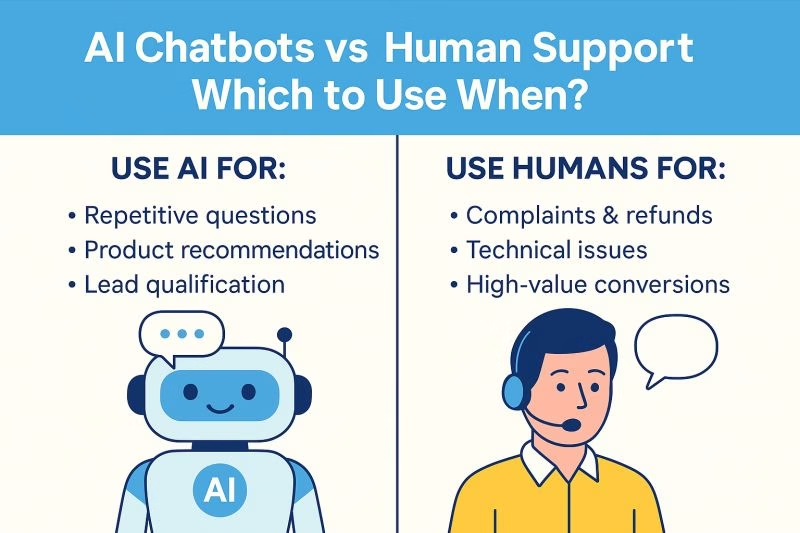
Brands need to be careful not to rely too heavily on automation. Chatbots are a great support tool, but they should never replace the option to talk to a real person. Without that, a helpful experience quickly turns into a frustrating one.
5. What Are The Top Retail Chatbot Tools?
Choosing the right chatbot tool can make or break your customer experience. Some tools offer simple live chat support, while others come with advanced AI, upselling features, and deep Shopify integration. Below are three standout options that cater to different business needs—from free tools for small stores to AI-driven support for scaling brands.
5.1. Shopify Inbox
This is a built-in chat tool inside the Shopify admin, ideal for retailers who want simplicity, real-time support, and a native Shopify experience without extra cost.
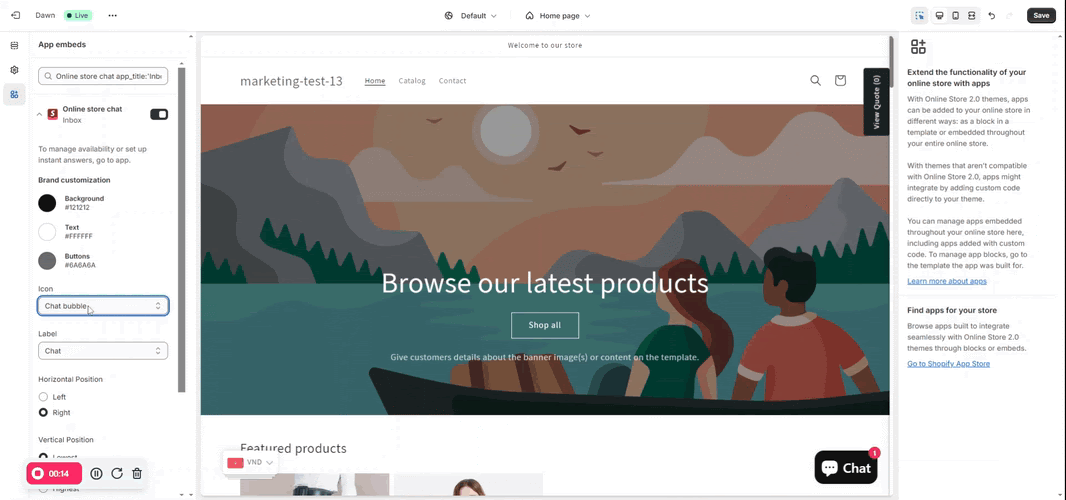
Key Features:
- Shopify Magic AI for instant answers and reply suggestions
- Cart, product, and order previews in the chat window
- One-click sharing of product links, discount codes, and order updates
- Chat classification to highlight likely conversions
- Automated greetings and contact forms
- Multi-language support (20 languages included)
Pros:
- Completely free
- Easy to use and fully integrated with Shopify
- Great for quick responses and product-based chats
Cons:
- Limited to Shopify users
- Basic automation compared to dedicated chatbot platforms
5.2. Tidio
Tidio is a flexible chatbot platform combining live chat, rule-based bots, and AI, with a strong Shopify app and help desk support for agent handoff.

Key Features:
- Drag-and-drop visual chatbot builder
- Prebuilt chatbot templates
- Lyro AI agent trained on your FAQs
- Product and cart previews within chat
- Automation for discounts, greetings, recovery flows, and surveys
Pros:
- Combines automation and human handover seamlessly
- Easy setup with Shopify
- AI answers plus rule-based flows
Cons:
- Free tier is limited (50 chats, 100 chatbot visitors)
- Monthly pricing increases with traffic and usage
Pricing: Free for limited use; paid plans start at $29/month
5.3. Chatty AI
Chatty AI is an all-in-one helpdesk chatbot for Shopify that includes live chat, a knowledge base, and a GPT-powered AI assistant. Great for growing brands with moderate budgets.
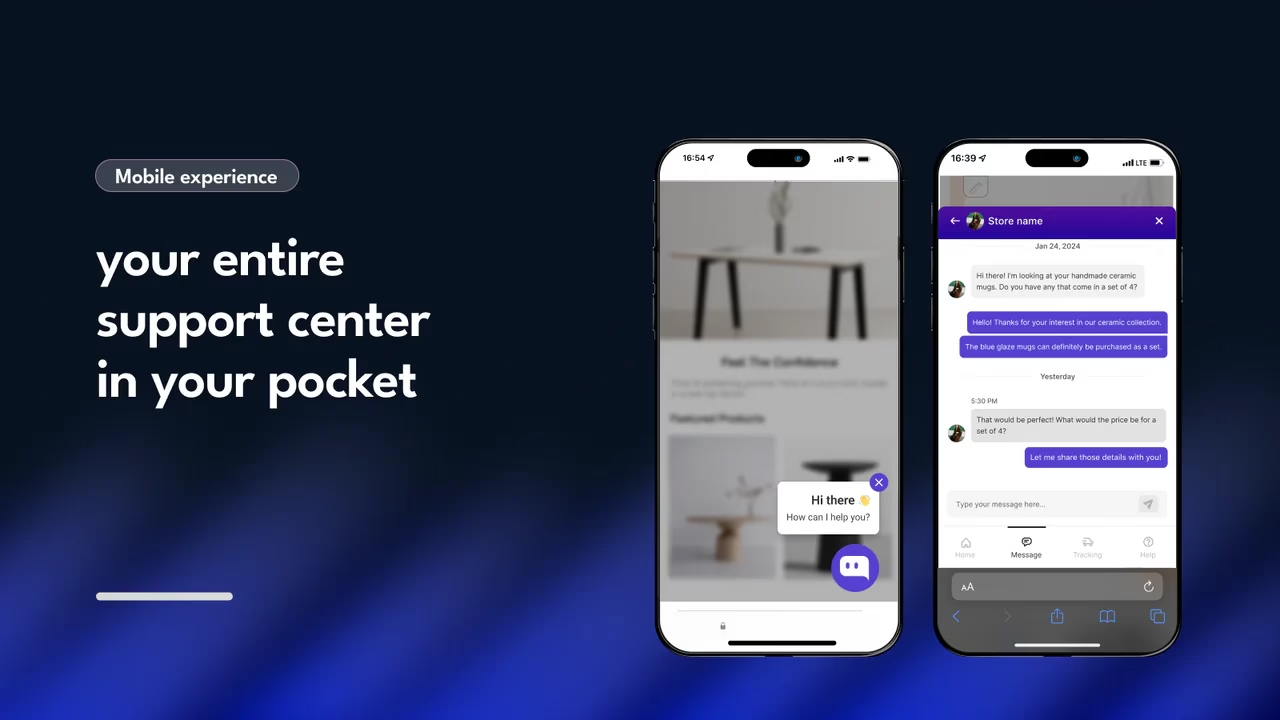
Key Features:
- Teach the chatbot using URLs or CSV uploads
- Visual FAQ builder for fast setup
- Behavior-based triggers for upsells and discounts
- Auto-translate feature in paid plans
- Unlimited chat history on Pro plans
Pros:
- Supports rich training data
- Affordable entry pricing
- Ideal for knowledge-rich support and upselling
Cons:
- Free plan has a limited quota (100 AI replies/month)
- Needs careful monitoring if used for 24/7 support
Pricing: Free for up to 100 AI replies/month; paid plans start at $19.99/month
6. What Are the Best Practices to Use Chatbots?
To get the most value from chatbots, brands should focus on strategic implementation and continuous optimization. Here are the things that brands need to focus on:
- Set Clear Bot Limits: Set clear expectations from the start by letting users know what the bot can and cannot do, and track unresolved chats to monitor performance.
- Enable Omnichannel Chat Support: Offer seamless omnichannel support by integrating chatbots across platforms like WhatsApp, social media, and live chat, ensuring consistent communication and unified customer profiles.
- Train and Update Regularly: Keep your chatbot up to date with regular training—update it with new products, policies, and promotional information, and use analytics to fine-tune responses.
- Always Offer Human Help: Always provide a clear path to human support to avoid customer frustration, and pass context to agents to deliver a smooth handoff.
“By 2027, chatbots will become the primary customer service channel for a quarter of all organizations.”
— Gartner
7. Conclusion
Retail chatbots are no longer a futuristic concept—they are a practical necessity in 2025. As shoppers demand faster, more personalized, and more convenient service across multiple channels, chatbots are stepping up to deliver.
From helping customers find the right product in-store to offering instant post-purchase updates or driving upsells through smart automation, these AI-powered tools are redefining customer experience. They not only reduce operational costs but also enable brands to serve more customers, more effectively, and at scale.
With customer expectations at an all-time high and attention spans shrinking, the ability to respond instantly—on any platform, at any time—can be the difference between losing and winning a sale. Retailers who strategically adopt and optimize chatbot technology today are setting themselves up for higher customer satisfaction, stronger loyalty, and sustained growth in an increasingly competitive landscape.
Feel free to get in touch with us saurabh@daiom.in or our team if you are interested to know how to drive impact from chatbots and gen AI.
Subscribe to our Newsletter.


